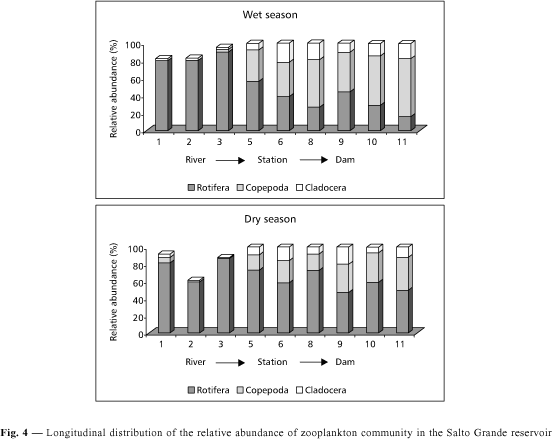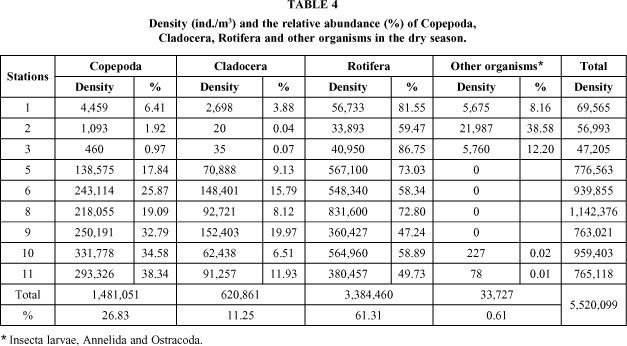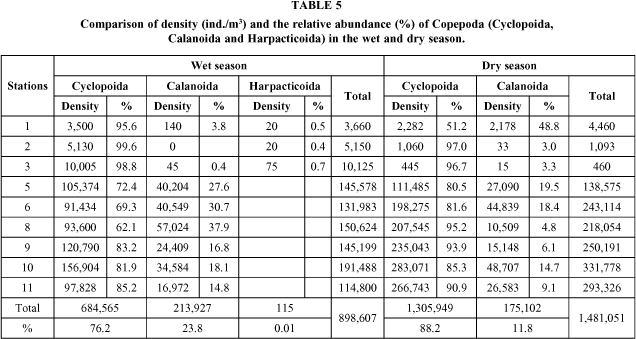Studies on the longitudinal processes in reservoirs, involving physical, chemical and biological processes have been thoroughly appraised, suggesting the existence of a longitudinal organization controlled by the entrance and circulation of water which inserts modifications in the structuring of the system. To evaluate this effect, the Salto Grande reservoir (Americana, SP) was analyzed in 11 sampling stations in its longitudinal axis, in the rainy and dry seasons of 1997 considering the physical chemical and biological variables. Analyzing the results in agreement with the declining concentration degree of the river--barrage direction, a more significant correlation was verified in the dry period for total phosphorus (r² = 0.86), dissolved total phosphate (r² = 0.83), nitrite (r² = 0.93), inorganic phosphate (r² = 0.89), ammonium (r² = 0.84) and suspended material (r² = 0.85). In the rainy period, only nitrite (r² = 0.90) and conductivity (r² = 0.89) presented correlation with the distance of the dam, which demonstrates the effects of precipitation and the operational mechanism of the dam, as well as the distinction among the physical (sedimentation), chemical (oxidation) and biological (decomposition) processes in spatial heterogeneity of the system. These factors were decisive in the organization of these communities, with higher occurrence of rotifers and copepods in relation to cladocerans, the first ones being more abundant in the entrance of the Atibaia river, decreasing towards the dam direction, while copepods presented an inverse pattern. A distribution pattern similar to Copepoda was also verified for the Cladocera, evidencing a tendency to increase the density of organisms in the stations distant to the entrance of the Atibaia river, not being registered, however, a distribution gradient in the longitudinal axis, as observed for rotifers and copepods. In relation to the trophic degree a longitudinal gradient was also verified from eutrophic to oligotrophic depending on the location of the sampling station in relation to the longitudinal axis and period of analysis. The differences obtained, relating to the distribution of the environmental variables, demonstrate a characteristic pattern for reservoirs, with a longitudinal gradient in the sense river--barrage that inserts changes in the physical and chemical composition of the water, contributing to the differentiated establishing of biological communities.
reservoirs; longitudinal gradients; formation of compartment










